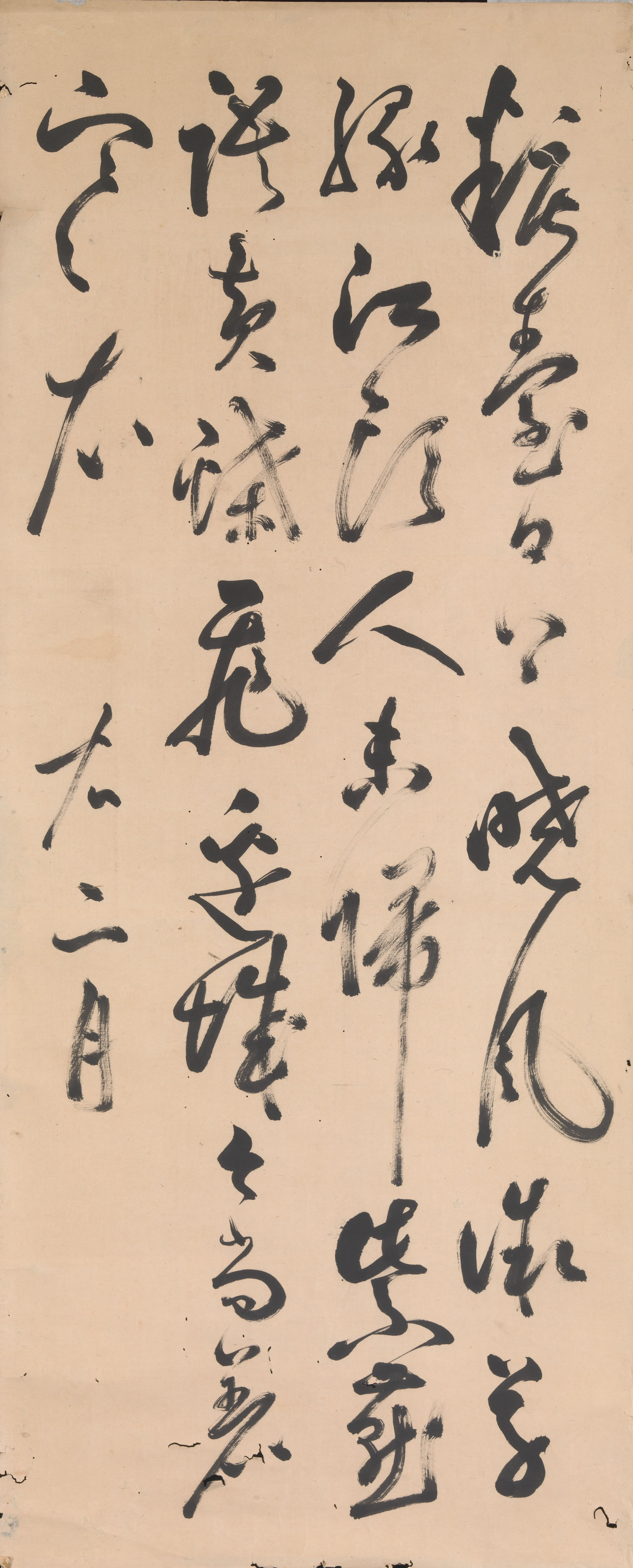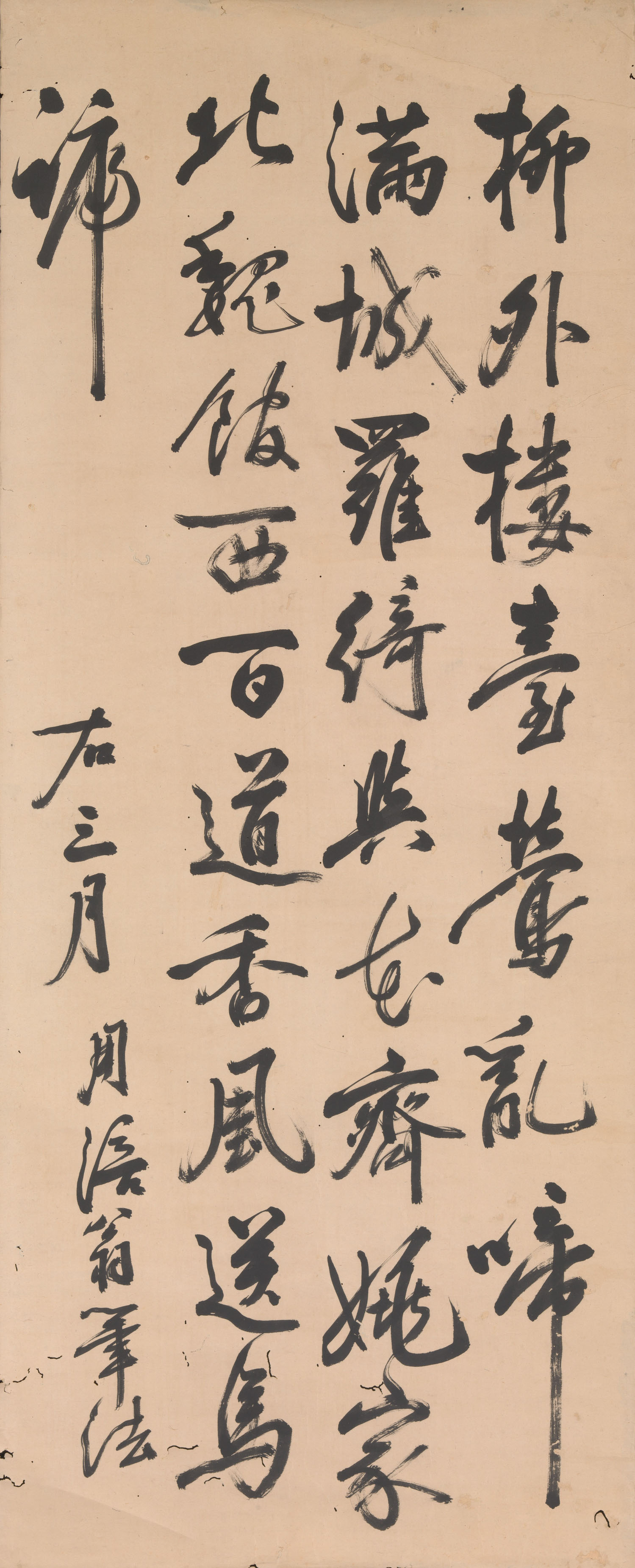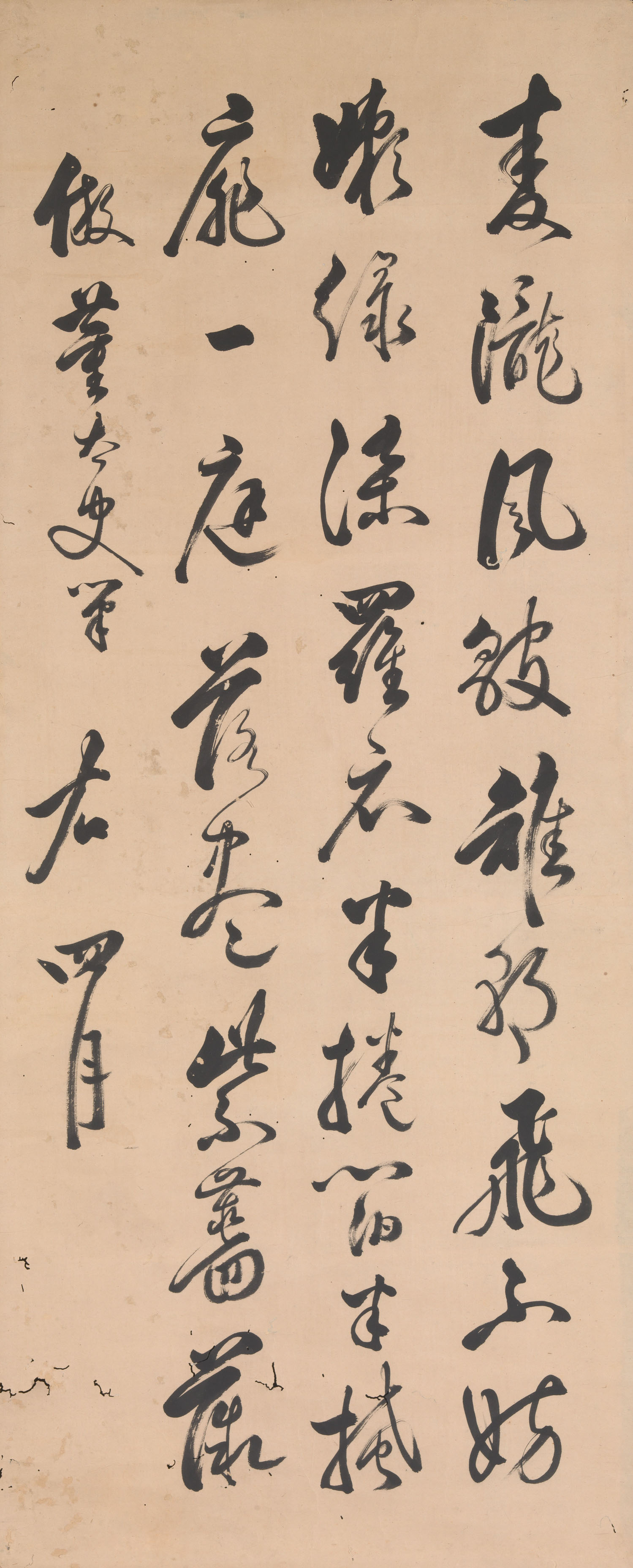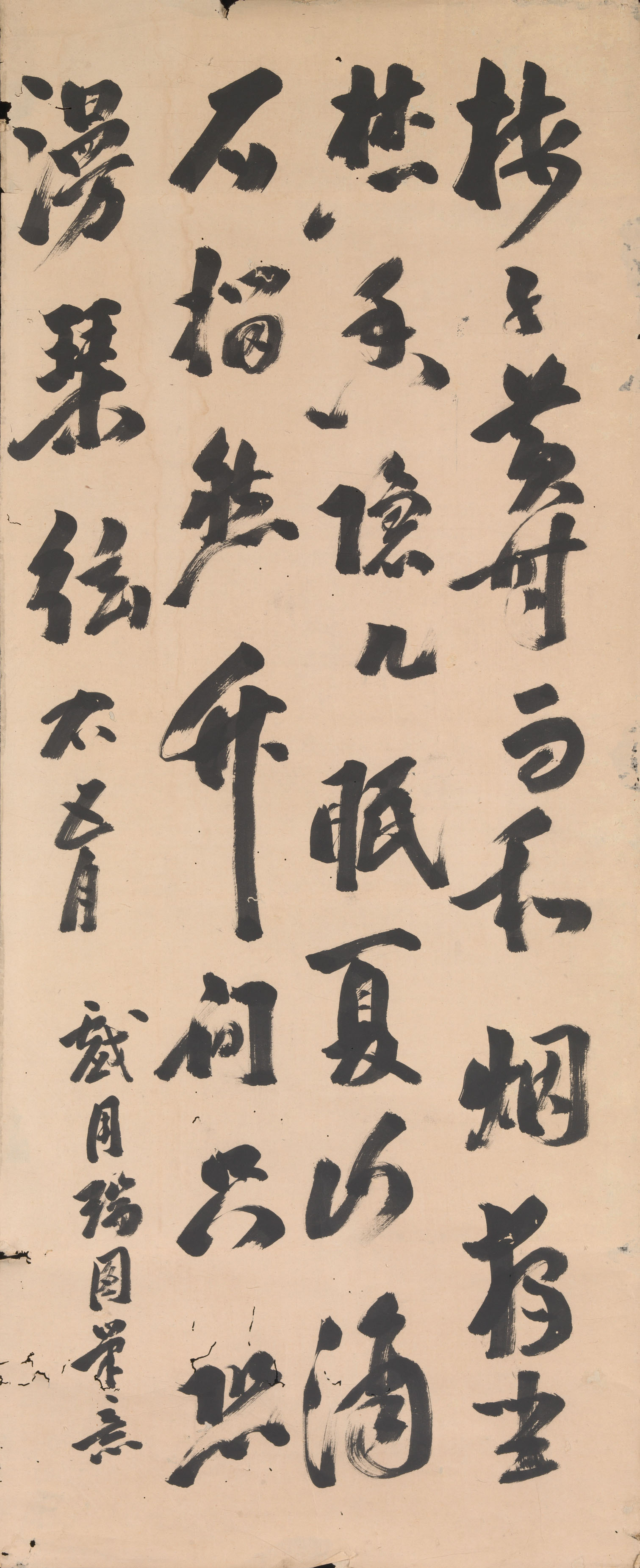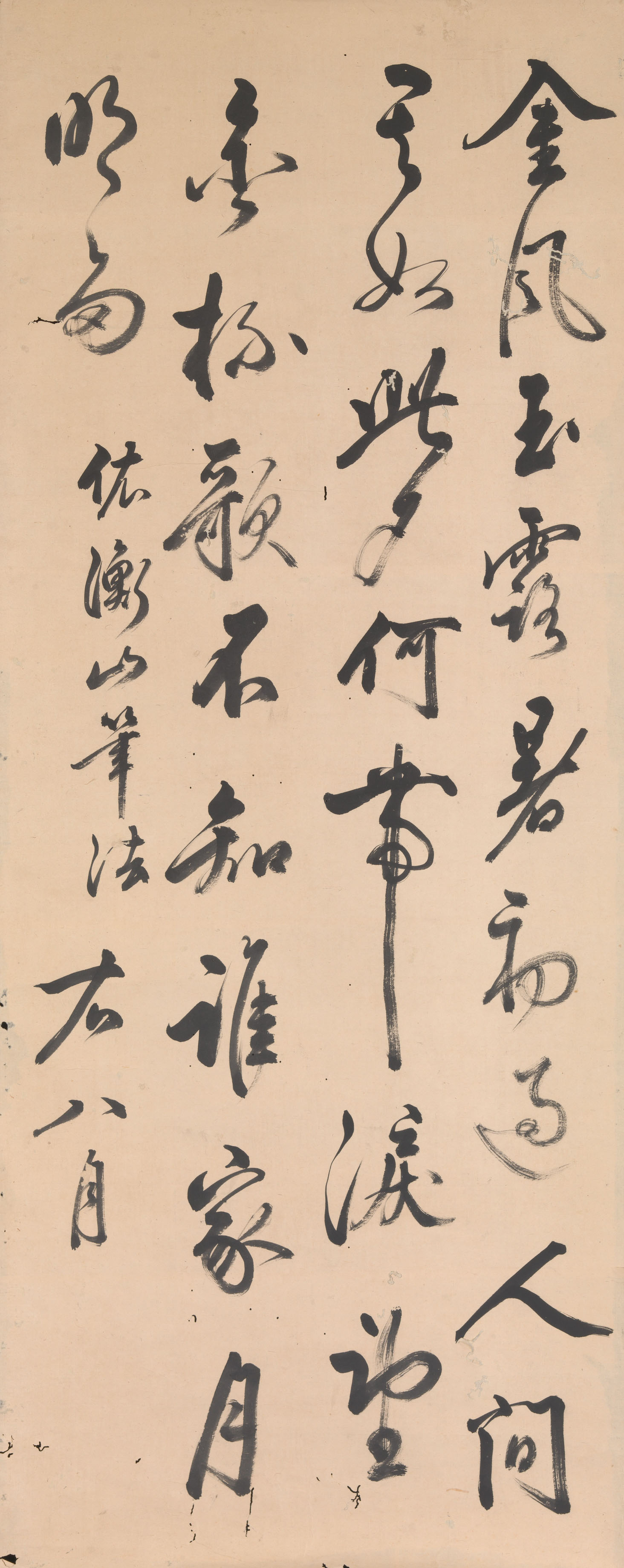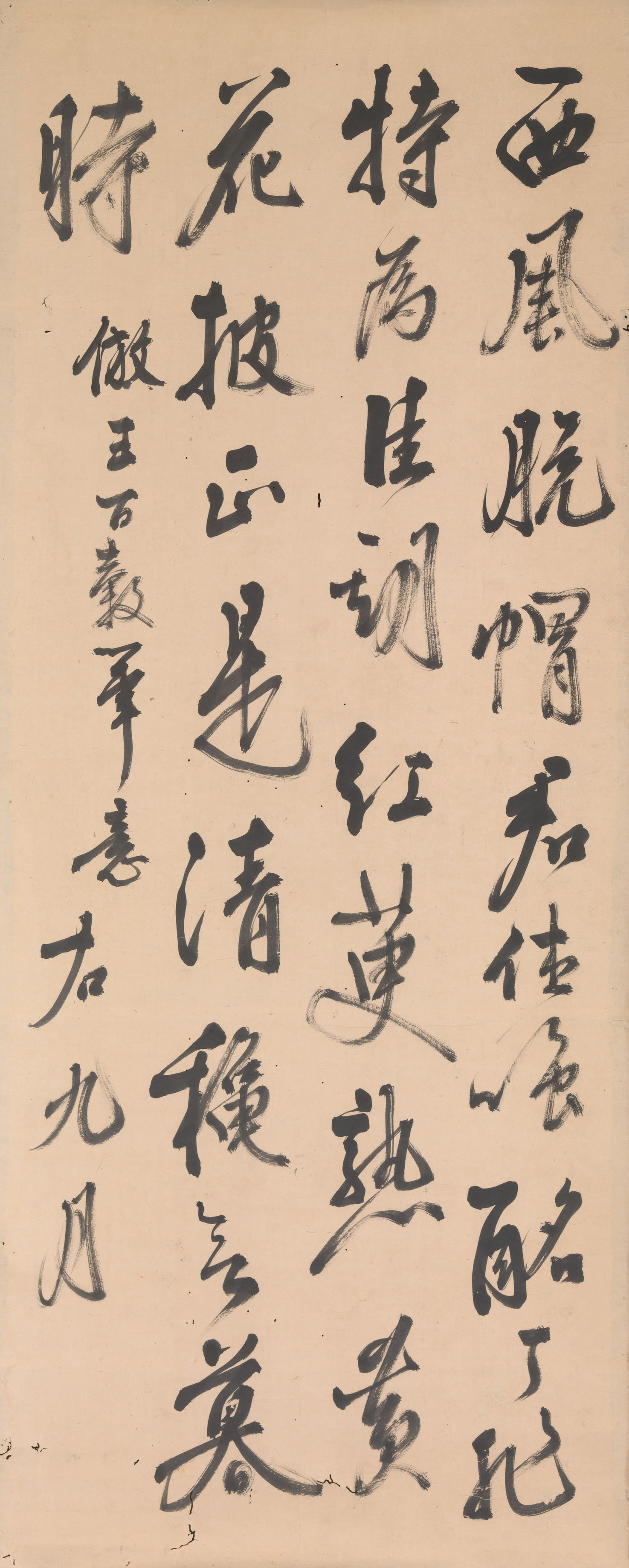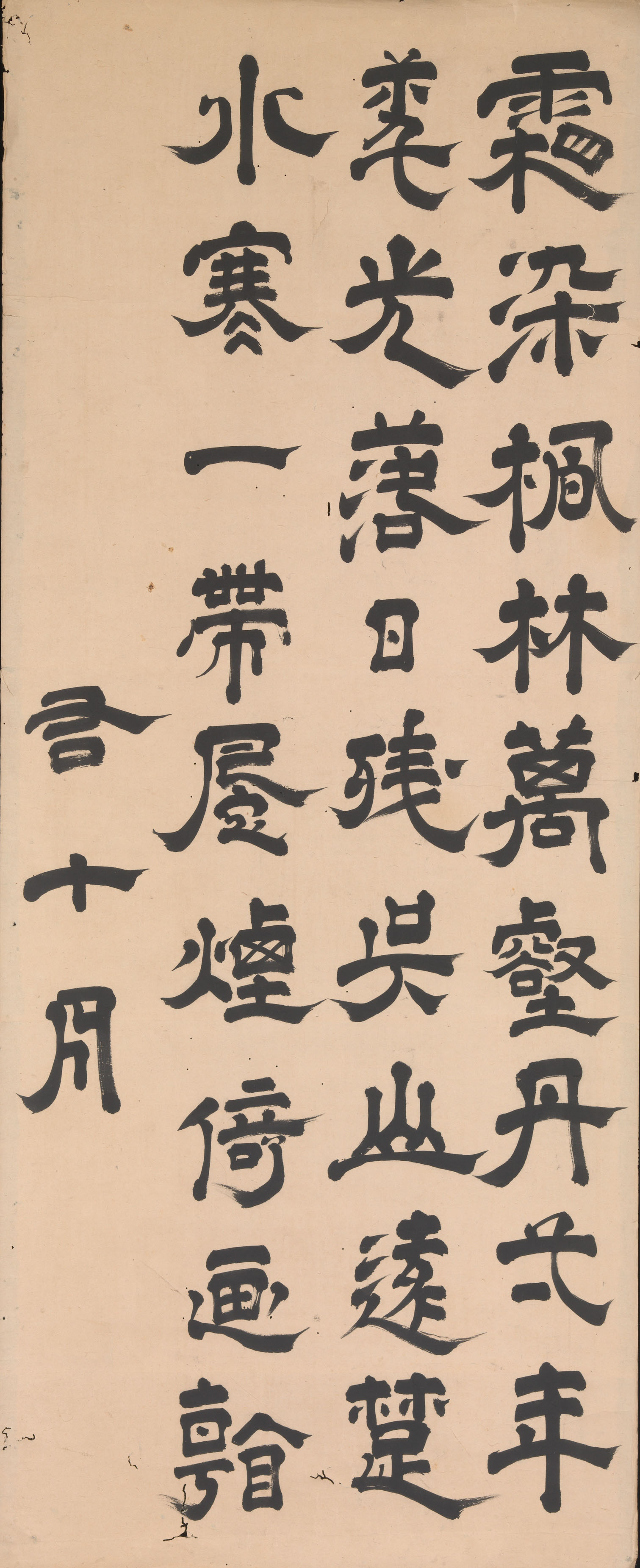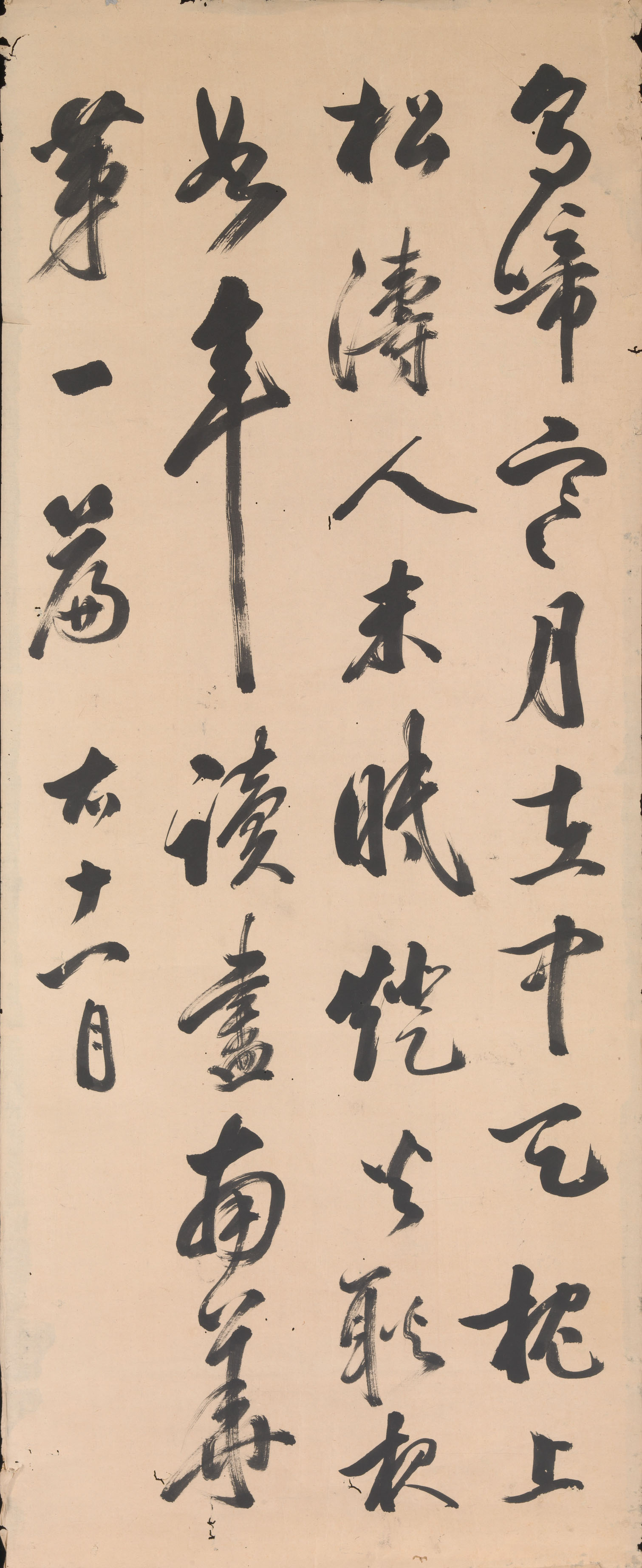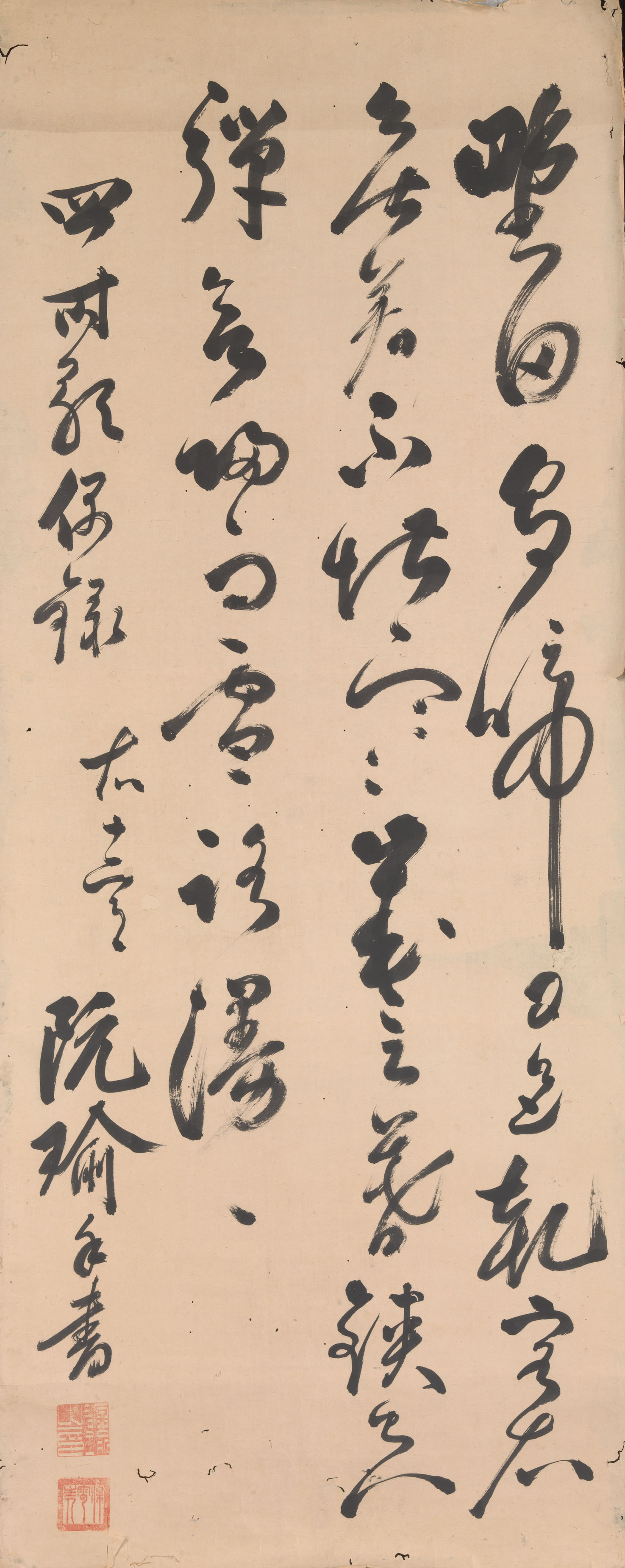Chinese Poems for the Twelve Months
Gion Nankai Japanese
Not on view
Gion Nankai is counted as one of the great pioneers of the Bunjin (Literati) painting and calligraphy movement of the early eighteenth century, and recognized as one of the most talented poets in Chinese of his generation. This series of twelve poems by Nankai, each on a seasonal theme related to the relevant month of the year, is rendered in an impressive array of Chinese calligraphy styles. It serves as a visual record of the Chinese calligraphy styles that inspired and influenced literati calligraphy of the eighteenth century, ranging from the archaic clerical script (rarely practiced in Japan in pre-Edo times) used to transcribe the poem of the tenth month, and that of the great Northern Song dynasty calligrapher Hwang Tingjian (Pei Wang: 1045–1105) represented in the exuberant brushwork of the third month poem. The Yuan dynasty calligrapher Zhao Mengfu (1254–1322) was an overriding influence throughout Nankai’s calligraphy practice.
But by far the greatest influence on Nankai and his contemporaries was Ming calligraphy of a previous century or two, and the here the poet-calligrapher notes in the colophon of the inscriptions of certain sheets whose style he was emulating:
Fourth month: Dong Taishi (Dong Qichang; 1555–1636)
Fifth month: Zhang Ruitu (1576–1641)
Eighth month: Weng Hengshan (Weng Zhengming; 1470–1559)
Ninth month: Wang Baigu (1535–1612)
Due to rights restrictions, this image cannot be enlarged, viewed at full screen, or downloaded.
This artwork is meant to be viewed from right to left. Scroll left to view more.


